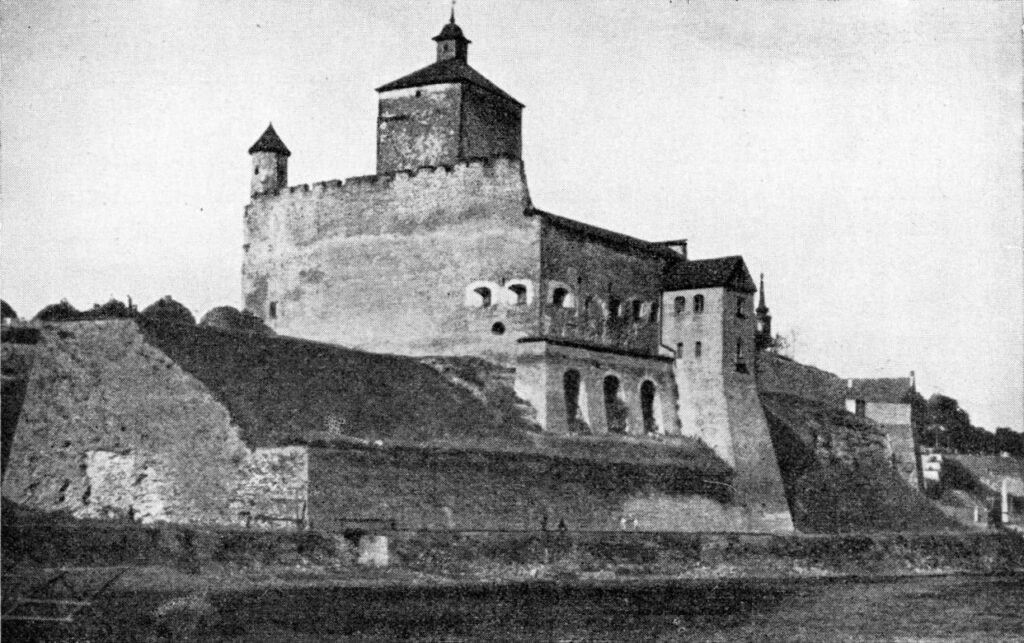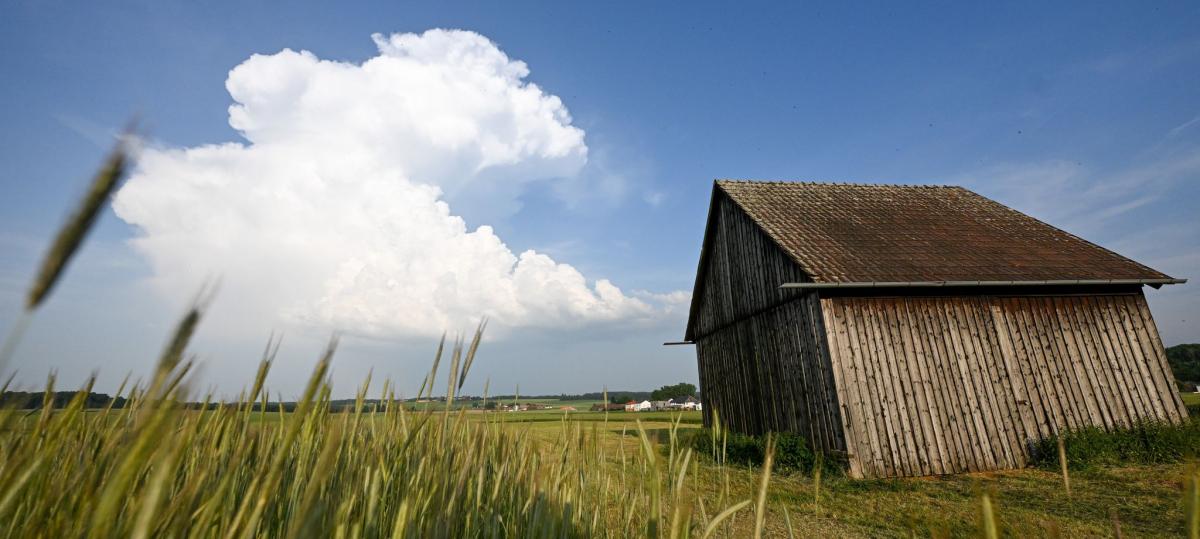She treats his daughter after an injury by felting. The old craft was launching her hands and pleased her mind – we

They built their own therapy.
Nedožery-Brezany. She has been working in culture all her life. Her world was art and everything related to it. Fate arranged it so that he and her husband also do his retirement. He subscribed to tinkering and she discovered the world of felting.
It was 2004 and everything could be different. A serious injury was supposed to get rid of their daughter forever and make someone completely different. Thus, no one imagined the conclusion of her university studies. But fate poured hope into their lives.
Sheep wave has become therapy for them. In the old house they are already the fourth generation that inhabits it. There’s everything to be. Memories, love and hope. A real home that, despite what they have survived, is not just trying to cheap an imitation of happiness, but it is real.
Antónia Bartošová From Nedožier-Brezian at Prievidza, she gave her daughter hope when she breathed life to the old craft of felting. She suspected that when the hands were moving, the whole body was moved, the mind is pointed out, and life could have much more varied colors than fate offered them. She was not wrong. Together with their daughter they paint them in felt.
In the interview you read:
- What do you need to felt,
- How much does it take to make a hat,
- What things can be produced by this technique.
Why did you choose this technique?
We were looking for a suitable activity for my daughter, who is disabled after an accident. With regard to its interests, possibilities and potential. It was a long way to reach the felting. We started to do it seven years ago. To focus on this craft, we were inspired by probably the largest contemporary connoisseur of folk culture and craftsmanship from our region, Rasť Haronik.
He made an old house a folk museum in which he returns people a century back, many are shocked Read
As a family friend he knew Lucia since birth. Also her hobby in wearing hats. There was the type that anything sat on her head. Already as a teenager in one youth camp, she stuck her hat. And when we were looking for an activity in which fingers and hands are strongly involved, which significantly stimulate the activity of the brain and its creative potential, we found felting.
We acquired the knowledge and technique of the felting as self -taught. We learned mainly from the Internet and available historical sources. We focus on wet felting technique, it is a manual way of making felt. We honestly twisted our three apprenticeship years, but wet felting currently offers a huge number of creative practices. In this way we are always educating ourselves and new elements are inserted into our products.
Today we have a protected workplace and felt. We focus mostly on hats, but we also produce various practical items and fashion accessories. We can create anything with the technique of wet felting. Even clothing and shoes, in short, from head to toe.
What do you need?
Table, two hands, sheep wool, water, soap, some water impermeable foils, a little imagination and time.
She exchanged the bank for clay and precious stones. Finally, he can only do what he wants Read
Felting is the oldest method of fabric production. Such a nonwoven. With your own hands of shaped and processed wool from sheep or other hair. The basis is wool. It can be in the form of combators, or the so -called bowed wool. We use a 100 % merino wool, but other types of wool can be used. Other materials that are combined with wool are also used in the creation process. This creates a different surface structure or product decoration.
Can you describe the whole production process in more detail?
First, prepare a template, or cut the product from the water of impermeable foil. The template must be enlarged by the wool clotting coefficient during the production process compared to the expected product. We store the wool fibers in several thin layers on it. The layers must be crossed in different directions so that the fibers are precipitated in the desired direction. Then sprinkle everything with soap solution and strok, push, rub in different ways to make the fibers perfectly connect. In the process we use various tools, rollers, massage aids and various other items.
We just love hats because:
Hats are curious,
That’s why they live on their heads.
They see everything from a great height –
Donuts, bowls, even mice.
They see like from a lookout tower,
Who steals to whom.
They have been sitting all their lives.
It is not more pleasant to live.
Have such a strange habit –
Every women’s hat
Indeed in the whole wide world
Men’s head is always knitted.
When hats meet,
They make big arches.
Pretty quiet and not vigorously,
Their respectful greeting will be heard.
And when the sun sets,
So they suddenly get into the dressing room.
One by one will be handed over to
And the hats-tricks.
Source: Niko Grafenauer when trees wear hats
The essence is to create a continuous layer of fabric – felt, which has a certain strength and in wet condition and the necessary formability. After drying, the product can maintain its final shape thanks to the wool memory. In the finals, the product requires a variety of adjustments – steaming, ironing, razor blade or sunbathing.
This technique comes from the steppes, where people were throwing hair on the kicks, sprinkled with water, packed into the cylinders and attached to their horses after cutting animals. The horses were pulling those cylinders on the ground, and by such a process, shaking, the fibers were interwoven, smuggled, oppressed, and a felt or felt was formed.
Do hats occupy a substantial part of your work?
By felting the wool, it is basically produced by all parts of the garment that one needs for life. As I mentioned, the hats stood at the beginning of our interest in the technique of wet felting. And they are still the essence of our work. But we also create other fashion accessories such as handbags, goggles case, on mobilesjewelry made of wool or brooches, bracelets, pendants, various ornaments, keychains, but also slippers. We trained the technique of the felting itself and gradually improved it.
But we just love hats. Because the hats are curious, so they live on their heads. We were most enchanted by the era of hats between wars, during the First Republic. The hat was then part of the garment, it was not common to walk with his bare head. Who did not have a headgear was a stranger. Today the young do not wear it very much, but I believe that even among them hats will find their place. We want to reflect even crazy hats that would be interested in the younger generation.
How long does it take to make one hat?
It depends on the difficulty. A regular hat needs about a week, because some phases have to literally rest for some time. Large period hats are much more demanding and can last for two weeks or, depending on the complexity of the final decoration, more.
How do patterns and structures arise on hats?
In the base of the wool we insert different materials such as silk, viscose, lace, even lavender flowers in each stage of production. These are entered directly into the wool structure and then create unique patterns. It is always about experiments that bring us brand new surface structures. Many times it will surprise us how it will burn in the finals.
Which production phase is the most demanding for you?
Each has its own pitfalls. Unloading wool requires great patience. It is a lengthy and fine work, drafts should be avoided so that the fibers do not blow out. The felting itself involves a whole range of emotional expression, from cuddly stroking to aggressive physical strength. Likewise, shaping and final adjustment. And imagination is not limited, the possibilities of shapes, colors, combinations and use from the fiction of the world. From decor to benefit.
How much such a hat costs?
Handwork is not paid as it would deserve. In Bratislava prices range from eighty to two hundred euros. We sell a hat from forty to ninety euros depending on the difficulty.
Do you have customers outside Slovakia?
In the meantime, we are only moving in the region. But maybe our hats will find their way beyond the borders.
What fulfills you most about this work?
For me it is creation, relaxation and therapy at the same time. Working with hands stimulates a huge part of the brain, and is part of her daughter’s therapy during memory training. In addition to felting, I professionally also practice memory.
What would you recommend to those who would like to start?
Simply start. Find out what you need, get the basic materials and do, try. We did our first hat completely on the knees, without equipment. And if I could wish for something, let people work more hands. It is beautiful and healing at the same time.








